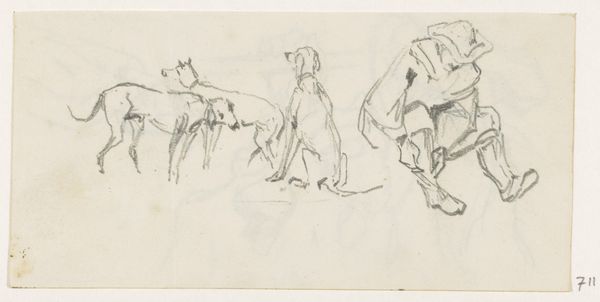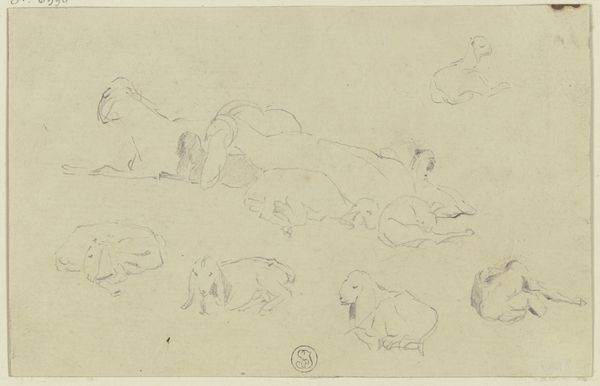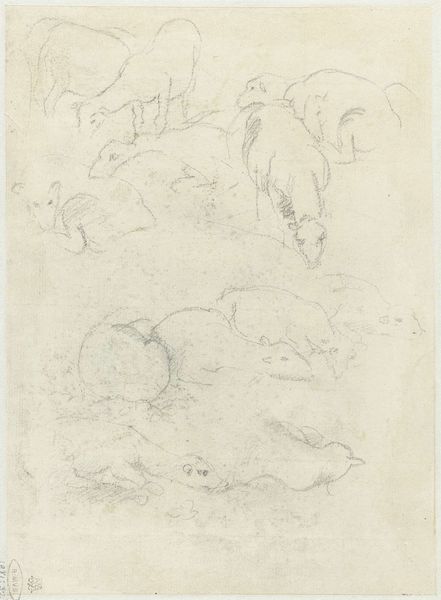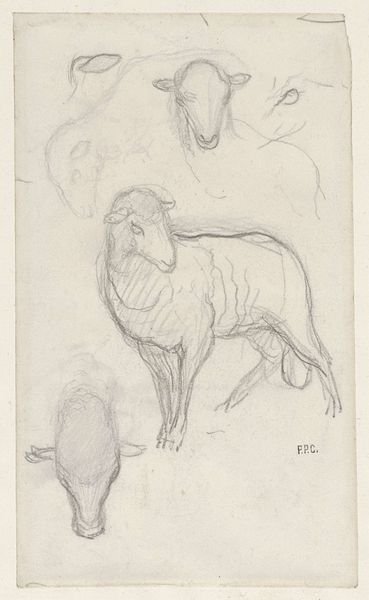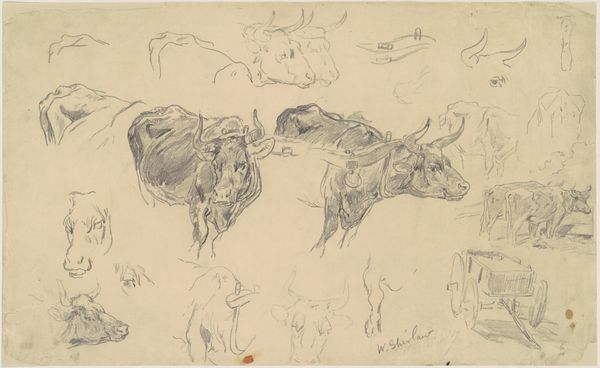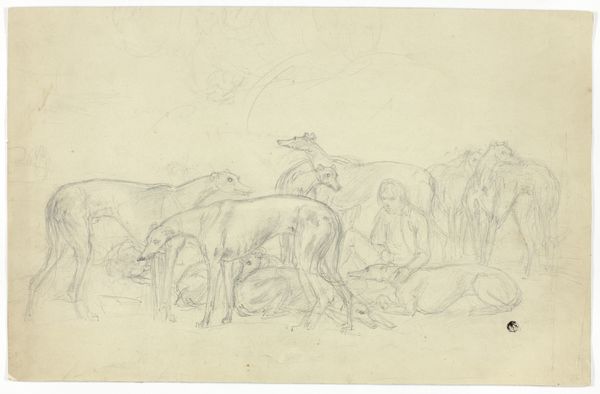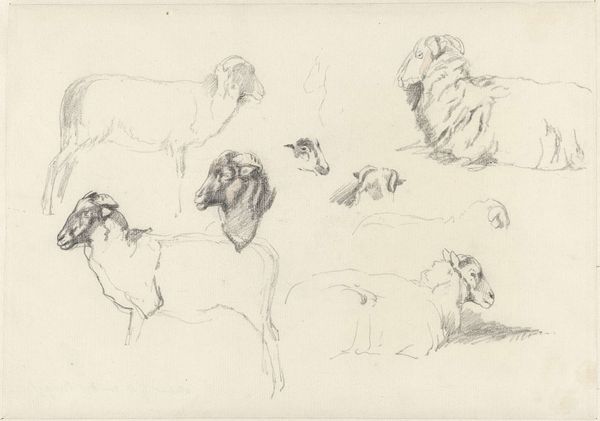
drawing, paper, pencil
#
drawing
#
pencil sketch
#
paper
#
pencil
#
realism
Dimensions: height 270 mm, width 395 mm
Copyright: Rijks Museum: Open Domain
Curator: Well, aren’t they odd birds! This pencil drawing, "Studieblad met parelhoenen"—or Study Sheet with Guineafowl—really feels like a private glimpse into Jan Mankes' artistic process. What do you see when you look at this sketch? Editor: An exploration of power, control, and also perhaps the subjugation of non-human lives, especially considering Mankes was a committed pacifist who refused military service. These birds are clearly studies, exercises almost, yet I wonder what attracted him to them in the first place. Curator: Perhaps their sheer strangeness! Guineafowl are peculiar birds, almost prehistoric-looking, wouldn’t you agree? Mankes captures their gawky elegance and those bizarre helmeted heads beautifully. It is believed that it was made sometime before 1917, using pencil on paper, in true realist style, which I always found charming given its somewhat mystical vibe. Editor: Yes, there’s certainly a delicate realism here, and that stylistic approach is interesting considering the socio-political context. The Netherlands during the early 20th century was neutral but certainly aware and impacted by the rise of industrialization, political unrest, and a certain colonial hunger from which they benefited and participated in—seeing these fowl immortalized on paper perhaps alludes to similar historical and economic realities, maybe suggesting both a separation from and engagement with that changing world. Curator: Or maybe it's simpler than that! Perhaps he found beauty in their plainness and sketched them as one might sketch a humble farmhouse, drawn to the intrinsic poetry of existence. They look so solemn and lost—there is something deeply poignant about the fragile outlines. Editor: That's a very generous and charitable read—I would still argue that Mankes, though a committed pacifist, like many, probably still partook of, or, was adjacent to more colonial activity; nevertheless, I can acknowledge the artistic intention behind his approach here. Curator: Exactly—we're probably both right, aren’t we? Perhaps the best art is something that can withstand such varied interpretation. Editor: Yes, certainly something to consider—so thank you, Jan Mankes, for the birds, and the contemplation they provoke.
Comments
No comments
Be the first to comment and join the conversation on the ultimate creative platform.
